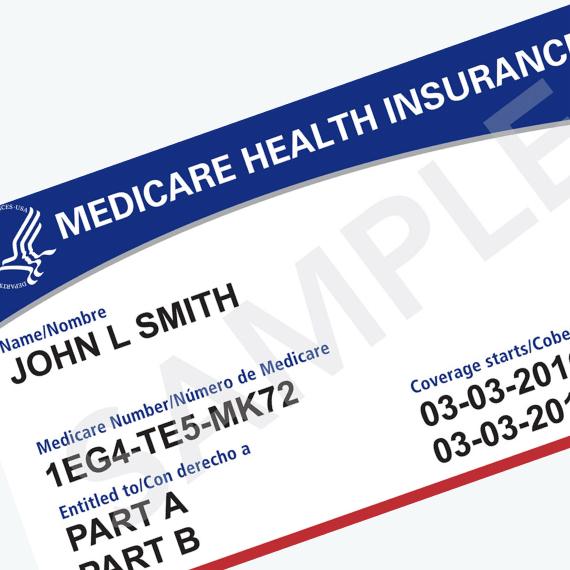
What Those Extra Letters on Your Medicare Card Mean?
When people get their Medicare card, there is a lot of information located on it. In 2018, Medicare ID cards removed the Social Security numbers for identification purposes. New cards were issued, and these new cards had Medicare ID numbers instead. This is due to a law that required this change to discourage identity theft.
In addition to the Medicare ID number, the beneficiary’s name is also located on the card. Other information that can be found is the phone number for Medicare, the sex of the cardholder, and the effective date of the policy. Other information is found on a Medicare card, in the form of extra letters. These extra letters are utilized to help provide information to hospitals and other people who need the information.
Medicare Suffixes
Each letter represents something, with some letters having numbers after them. The * symbol is also used in some of the combinations. One of the more common letters in the group is *A. This symbol and letter combination refers to the person whose ID card it is. *A let’s medical professionals know that the person holding the card is a retired worker.
Another letter that is featured on the card in its respective situation is the letter B. The letter B on a Medicare insurance ID card lets professionals know that the cardholder is the wife of a retired worker. Many other letter combinations are also located on ID cards for Medicare insurance plans. The husband of a retired worker will have the letter combination B1 located on their card. Medicare policyholders can have multiple suffixes on their card, denoting that they fit into multiple categories.
B6 refers to someone who is a divorced wife. B9 can also be found, which denotes that the person is a divorced second wife. These letters are used to indicate the nature of a person’s eligibility. Letter A, for example, means that the primary claimant is retired and has paid into the Medicare system for at least 40 quarters as a wage earner. The letters do not, however, have anything to do with enrollment in the various types of Medicare that are available, whether a person is looking to enroll in Medicare Part A, Medicare Part B, Medicare Part C, Medicare Part D, or any other types of Medicare. As an example, people who have the identification letter code on their card of A do not necessarily have Medicare Part A.
The B code on a card means that the claimant is drawing on the work record of their living spouse. B applies to a spouse that is drawing on their husband’s record, while B1 is a person who is on drawing on their wife’s record. Additional numbers are utilized to denote and ex-spouse or a second ex-spouse.
C codes are also used on cards, and these letter combinations are used to apply to child Medicare beneficiaries. The numbers that follow the letter C on the cards referred to the child’s relationship with the policyholder. A youngest child gets the code C1, with the second-youngest getting C2. This number pattern moves through to C9 and then moves to CA through CZ.
The next letter that can be found in the card is D. Code D is for people who are claiming from a deceased spouse solely due to age. D and D1 are representative of widows or widowers over the age of 60. These are the most prominent codes used in this category, though there are also codes that apply to spouses that are divorced as well as widows and widowers who choose to get married again.
Code E applies to widows and widowers who have qualifying children. This category has many variations and can be particularly complicated.
Another code that is utilized is Code F. This code refers to parents. Assigned to dependent parents of a worker who earned Medicare benefits, the codes in this category are also followed by a number that signifies the relationship.
Code H denotes people who are eligible for Medicare due to disability. The letter combination of HA denotes the policyholder is a disabled claimant. The letter combination of HB means the policyholder is the wife of a disabled claimant. The letter combination of HC means the policyholder is the child of a disabled claimant. Other letter combinations in the category of Code H are also used.
The groupings for Codes J and K are often described together, and they are for workers and spouses who become eligible for Medicare benefits without drawing Social Security. There are a few ways for this to happen, but it is not one of the most common things. Numerous codes could apply depending on if the worker has enough quarters of employment to earn Part A Medicare coverage or if they are paying for it separately.
Codes M are used for someone who is enrolled in Medicare Part B but is not eligible for Medicare Part A coverage.
Another letter that is used is T. This indicates a person who is retired and eligible for Medicare Part A benefits but are not eligible for retirement benefits. This letter can also be used to indicate the reasoning for a retiree’s eligibility for Medicare.
Additionally, the last letter utilized is code W. This category is used for disabled widows and widowers.
Knowing what the letters mean on your Medicare ID card is important, so utilize this article to check and make sure that the information on your Medicare card is accurate.